
Artifacts excavated from the Vuon Chuoi relic are on display at the Hanoi Museum. Photo: HL
Traces of a 4,000-year-old ancient village
Vuon Chuoi relic, Hoai Duc commune is a typical archaeological site of the Bronze Age in Hanoi and Northern Vietnam. Research results have proven the presence of an ancient village that developed continuously nearly 4,000 years ago, through many stages from Phung Nguyen - Dong Dau - Go Mun Culture to Dong Son and Post-Dong Son on Thang Long - Hanoi.
Since its discovery in 1969, the Hanoi Department of Culture and Sports has coordinated with specialized agencies to conduct 11 excavations with a total area of 7,555m². In particular, the excavation in the western area from March 2024 to March 2025 on an area of 6,000m² has basically revealed the distribution space, important traces related to the residential area, traces of daily activities, workshops for making stone and wooden objects, burial places and many typical relics of the Pre-Dong Son - Dong Son cultural period.

The artifacts on display.
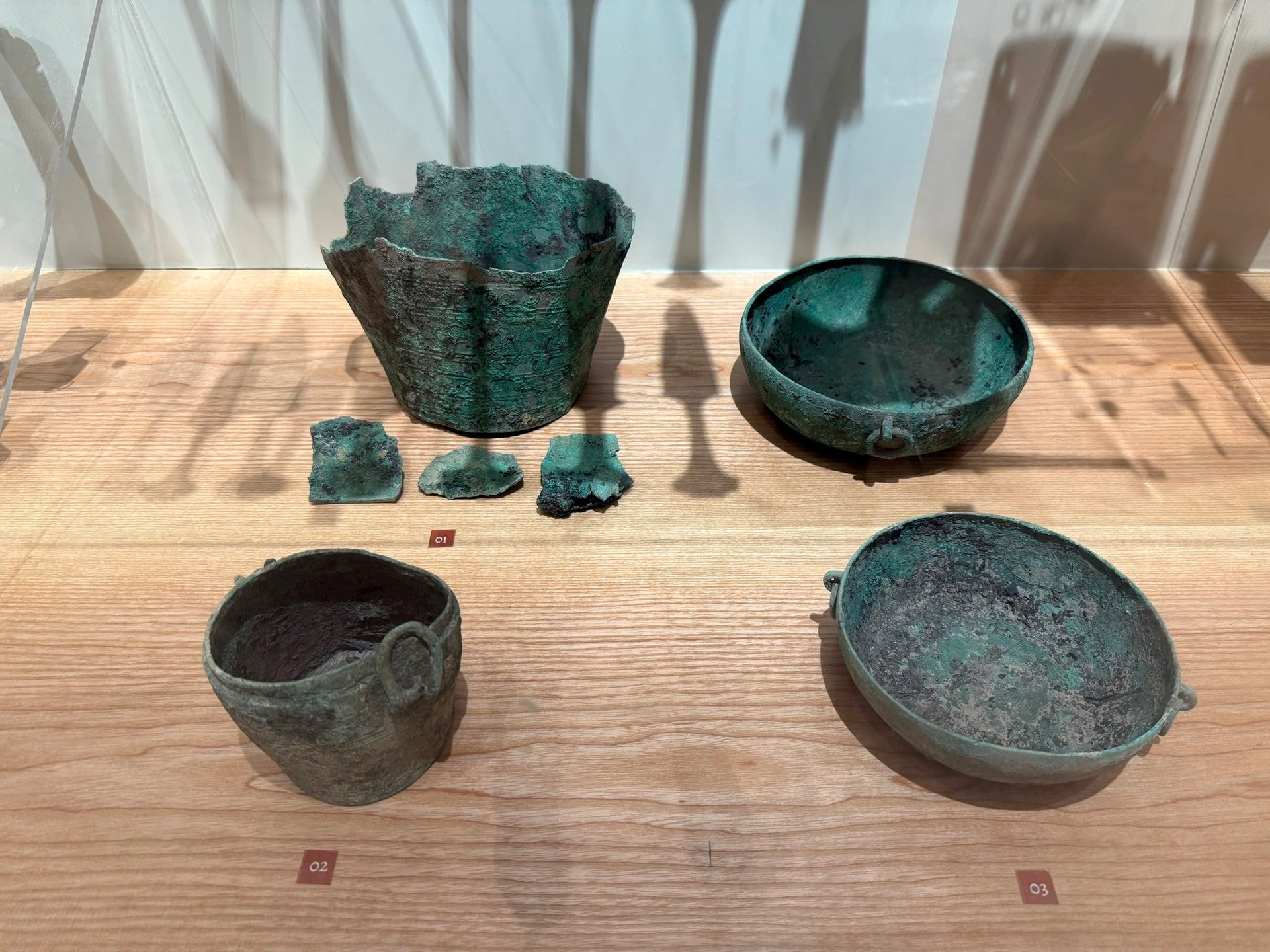
Bronze objects found at the site. Photo: HL
From the beginning of April 2025 until now, Hanoi Museum has coordinated with the Institute of Archaeology and the University of Social Sciences and Humanities - Vietnam National University, Hanoi to continue to edit and research the system of relics and artifacts collected from the excavation in the West of Vuon Chuoi in 2024.
Accordingly, the study of the residential area of Vuon Chuoi residents shows the continuous expansion and development of an ancient Vietnamese village through historical periods. From the initial settlement form on the high terrain of the mounds, with a surrounding moat system associated with natural flows, the residential space gradually expanded to the neighboring low areas and the appearance of stilt houses and long houses. These documents continue to affirm the presence of an organized society, with a relatively high division of labor.
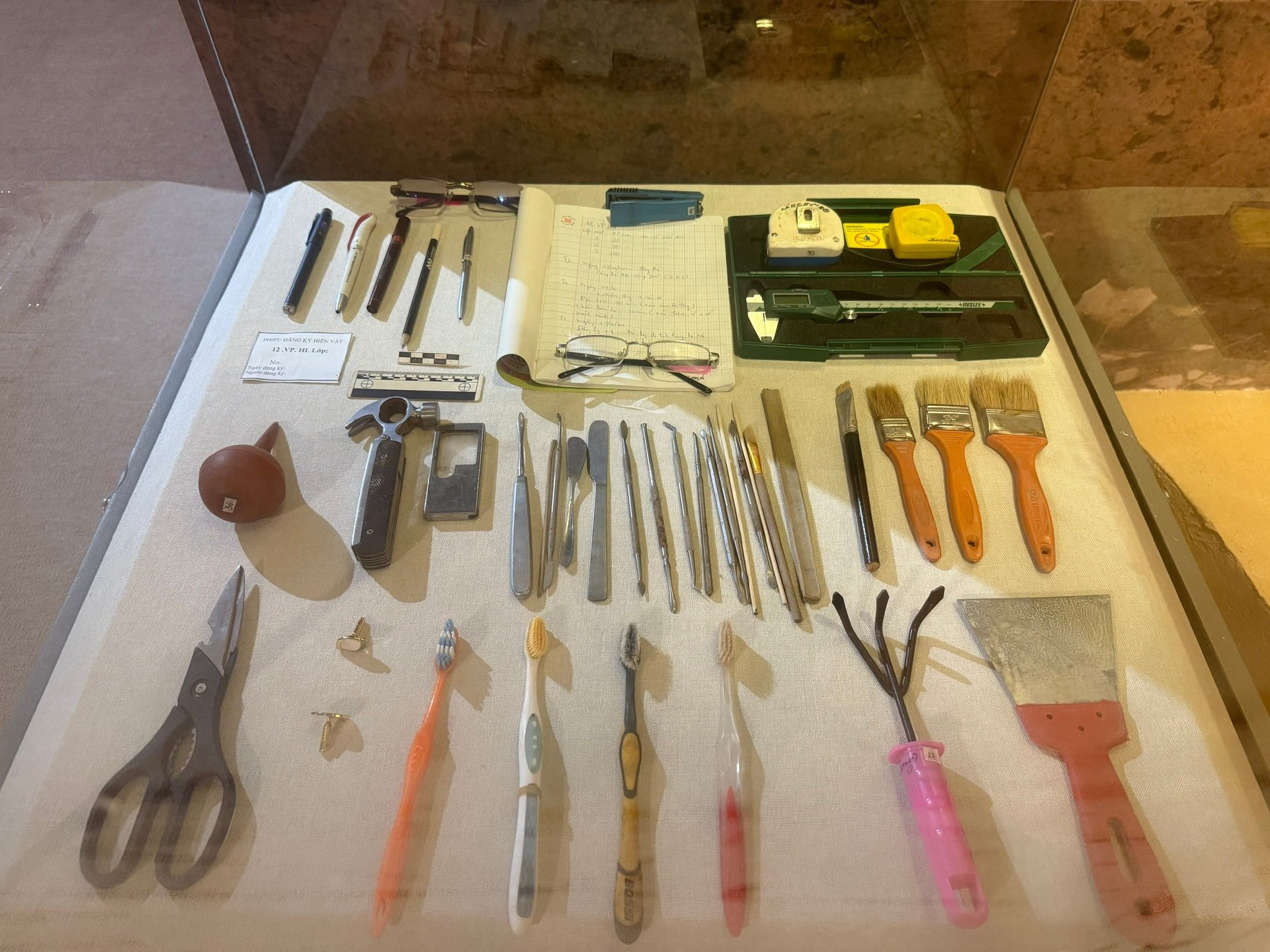
Tools that archaeologists use to excavate and preserve found artifacts. Photo: HL
In addition, the results of the study of remains show that the custom of pulling out incisors in adults was common in the late Phung Nguyen culture period, about 3,500 years ago; in the following periods, this custom was no longer recorded.
In the ancient village of Vuon Chuoi, the crafts of making jade, wood, pottery and bronze casting have developed into specialized industries. The jade crafting area is arranged in an orderly manner at the entrance of the village, and there is also the possibility of a ceremonial space existing nearby.
Special value from underground artifacts
According to the Hanoi Museum, the 2025 adjustment period has handled a huge volume of artifacts from the 2024 excavation, including: over 15,000 tons of ceramic fragments, nearly 5,000 tons of soil containing plant relic samples and about 15,000 artifacts of various materials including stone, bronze, ceramic, wood, bone, iron... spanning many different cultural periods.
Although still in the process of editing, it is possible to initially identify some particularly rare specimens recorded for the first time in the history of research on the Metal Age in Northern Vietnam and Hanoi, including: an axe - a green jade stone, symbolizing the power of the chief, a burial object in a tomb of the Pre-Dong Son period, about 3,500 years ago; a phoenix-shaped object; a collection of jade objects including objects worn (rings, earrings, beads...) and objects symbolizing the power of the chief class (nha chap, pointed-shaped objects...).
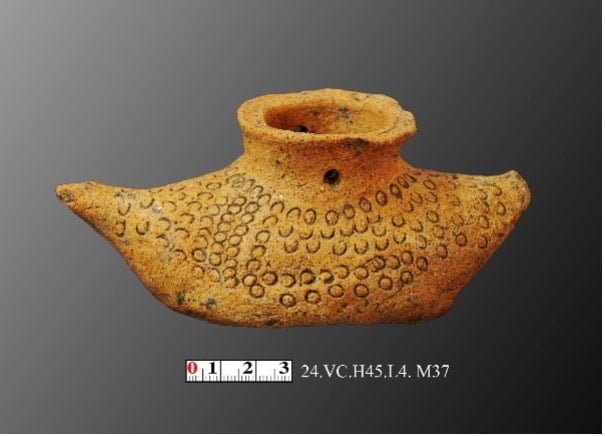
An artifact found at the site. Photo: Organizing Committee
Director of Hanoi Museum Nguyen Tien Da said that the documents from the 2024 excavation and the 2025 scientific revision continue to supplement historical sources, affirming the particularly important historical and cultural value of the Vuon Chuoi relic in the Bronze Age in Northern Vietnam. The Vuon Chuoi site is a residential and burial site and a craft workshop area that continuously developed through the Phung Nguyen - Dong Dau - Go Mun - Dong Son and Post-Dong Son cultural periods.
“Vuon Chuoi is a typical representative of a village bearing the mark of wet rice farming residents, who came to explore, occupy and control the Red River Delta nearly 4,000 years ago, creating the premise for the formation of the early State of the ancient Vietnamese people,” said Dr. Nguyen Ngoc Quy, Institute of Archaeology, Head of the excavation team.
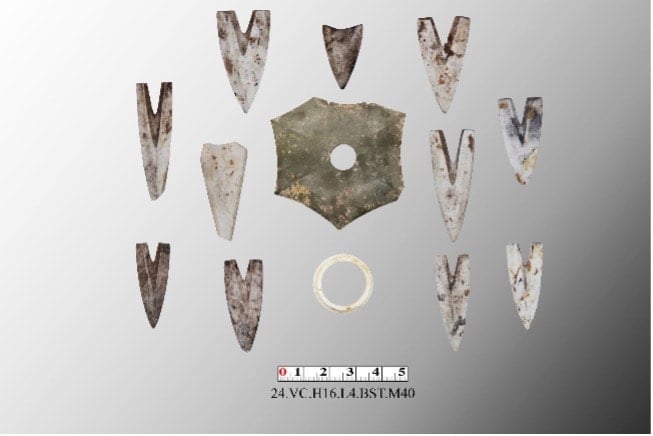
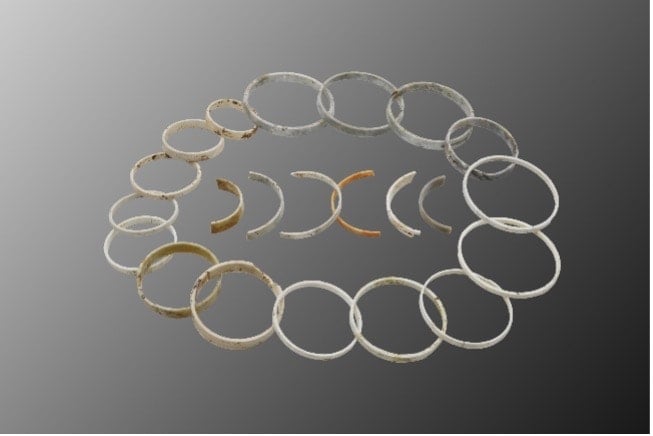
The artifacts found show that an ancient village with a rich lifestyle was formed in Vuon Chuoi. Photo: BTC
At the thematic exhibition space "Archaeological discoveries from the Banana Garden" in the Hanoi Museum this time, the public can admire important artifacts with unique values, showing the history of Thang Long - Hanoi in the early State period from the Banana Garden relic.
The exhibition consists of 5 parts: Journey of discovery; Convergence and crystallization of cultures; Protection and promotion of the heritage value of Vuon Chuoi site; Scientists associated with Vuon Chuoi; Experience corner of being an archaeologist. The exhibition introduces nearly 1,000 documents, artifacts, materials, images and graphic maps simulating the types of artifacts and daily life of the residents of Vuon Chuoi ancient village. In the art of exhibition, Hanoi Museum also uses 3D projection technology, 3D mapping; showing short films recreating the daily life of the residents of Tien Dong Son and Dong Son.
In addition, the Organizing Committee also launched the book publication "Discovering Vuon Chuoi (Hanoi) through the excavation season 2024 - 2025", which introduces: Journey to explore relics; introduces new discoveries and perceptions from the results of excavation research in 2024 - 2025, affirming that Vuon Chuoi is a place where ancient Vietnamese cultural values and vitality from the archaeological heritage of Vuon Chuoi in contemporary life converge.
With its outstanding historical and cultural values, the Vuon Chuoi archaeological site has been recognized as a City relic by the Hanoi People's Committee in Decision No. 3134/QD-UBND dated June 23, 2025. The excavation results at the Vuon Chuoi archaeological site have become important historical data, contributing to affirming the history of the thousand-year-old Thang Long - Hanoi land.
Source: https://hanoimoi.vn/phat-hien-moi-ve-lang-viet-co-4-000-nam-cua-thang-long-ha-noi-tai-vuon-chuoi-722675.html









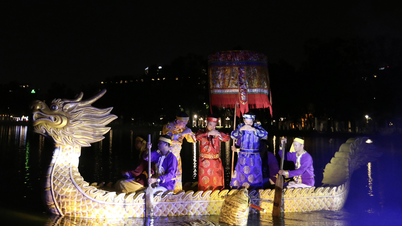

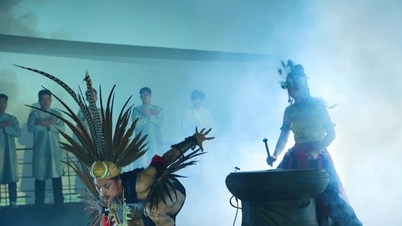
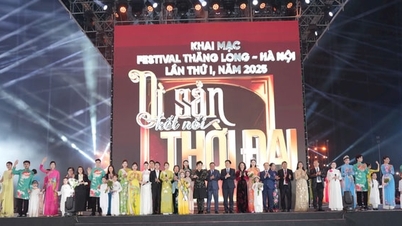




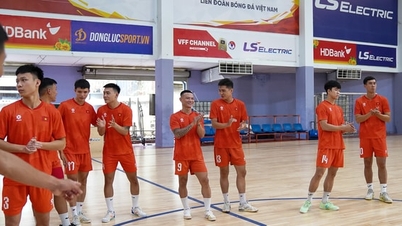
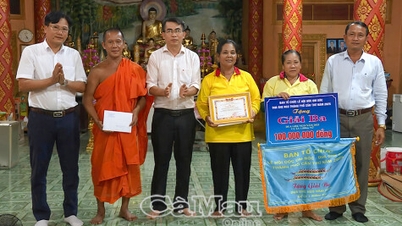

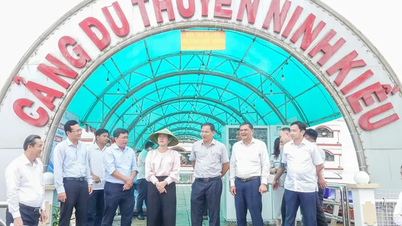











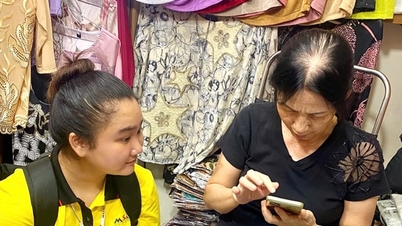


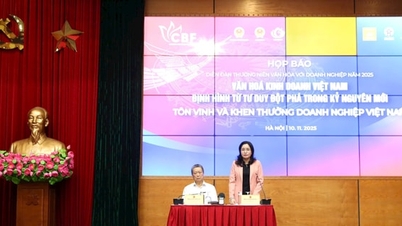






































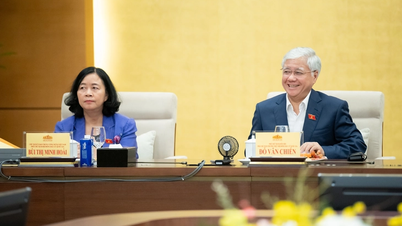









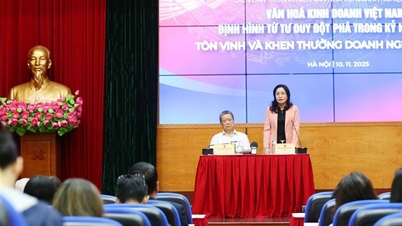
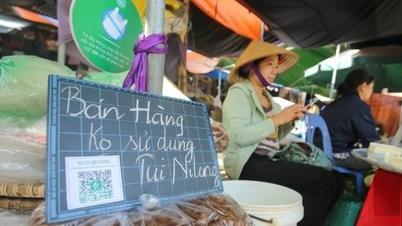


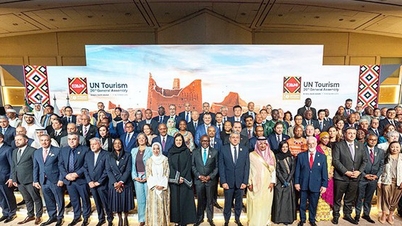



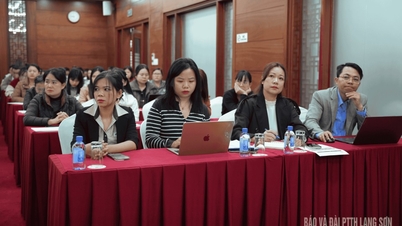


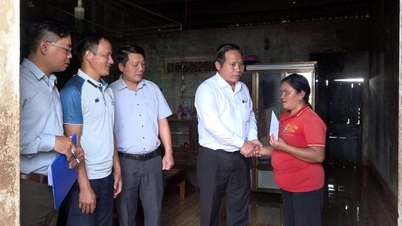



![Dong Nai OCOP transition: [Article 3] Linking tourism with OCOP product consumption](https://vphoto.vietnam.vn/thumb/402x226/vietnam/resource/IMAGE/2025/11/10/1762739199309_1324-2740-7_n-162543_981.jpeg)











Comment (0)